Keynotes
 Shuwen Xu
Shuwen XuProfessor
Xidian University, China
Title: Artificial Intelligence Practice of Radar Signal Processing
Abstract: The traditional radar signal processing methods simply use the radar signal processing algorithm based on simple statistical learning. Considering the actual engineering application, even now, most radars still inherit this advanced algorithm of artificial intelligence that only uses statistical learning, but not too much machine learning to analyze and process radar signals. With the rapid development of radar technology, some machine learning algorithms are used for radar signal analysis. It can solve many complex problems, thus meeting our technical requirements and achieving good results. In combination with the reporter's scientific research experience, this report details the convergence and application points of machine learning and radar signal processing, and focuses on the possible applications in radar target detection.
About the Speaker: Shuwen Xu (IEEE Senior Member) was born in Anhui, China. He received the B.Eng. and Ph.D. degrees, both in electronic engineering, from Xidian University, Xi’an, China, in 2006 and 2011, respectively. He worked at the National Laboratory of Radar Signal Processing, Xidian University, after that. He worked as a visiting professor in Mcmaster University in 2017 and 2018, Canada. He is currently a professor with the National Laboratory of Radar Signal Processing, Xidian University. He is also the vice director of National Collaborative Innovation Center of Information Sensing and Understanding and the Director of radar signal processing and data processing Department. He is also the leader of the "Radar Target Detection and Anti jamming" team of Shaanxi Provincial Innovation Team. His research interests are in the fields of radar target detection, statistical Learning, and SAR image processing.
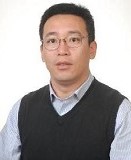 Fujun Zhang
Fujun ZhangProfessor
Beijing Jiaotong University, China
Title: Recent development of Photomultiplication type organic photodetector
Abstract: Polymer photodetectors (PPDs) present a remarkable commercial potential due to the typical characteristics of flexibility and eco-friendliness. Photomultiplication type PPDs (PM-PPDs) have emerged as the research hotspot in recent years, exhibiting the prominent advantages such as high-sensitivity, low-power consumption and tunable spectral-response-range. PM-PPDs can be obtained on the basis of active layers possessing single charge carrier transport channels, which were firstly reported by Zhang’s group. The weight difference between the donor and the acceptor is dozens of times in active layers of PM-PPDs, which prefer to form some isolated traps for one kind of charge and also retain continuous transport channels for the opposite charge. Ultraviolet (UV) narrowband photodetectors play a critical role in missile detection, flame monitoring, optical communication, etc. It is a great challenge to realize UV narrowband organic photodetectors due to wide photo-harvesting property of organic materials, especially for photomultiplication type organic photodetectors (PM-OPDs). The optimized PM-OPDs coupled with optical microcavity exhibit EQE of 9300% at 350 nm and narrowband response with 33 nm full-width at halfmaximum under −15 V bias. This work indicates that PM-OPDs coupled with optical microcavity should be an efficient strategy for achieving UV narrowband response.
About the Speaker: Fujun Zhang,an accomplished researcher in the field of organic photovoltaic devices and organic optoelectronic detectors. He received his bachelor's degree from the Minzu University of China in 1999 and his doctoral degree from Beijing Jiaotong University in 2007. Since then, he has made significant contributions to his field, earning him the title of professor in 2013 and promotion to level three professor in 2018. Professor Zhang's research focuses on the early study of ternary system organic photovoltaic devices and amplifying narrow-response organic optoelectronic detectors. Over the past five years, he has published over 40 papers as first or corresponding author in journals with impact factors greater than 15, including Energy Environ. Sci., Adv. Mater., Adv. Energy Mater., Adv. Funct. Mater., ACS Energy Letters, Nano Letters, Natl. Sci. Rev., Sci. Bullet., and Nano Energy. His work has been highly cited, with over 15,000 citations and 39 highly cited papers according to ESI. He was selected as a TOP 1% Highly Cited Chinese Author by the Royal Society of Chemistry from 2017 to 2021, and his work on super-narrow-response amplifying organic optoelectronic detectors was chosen as one of the "Top 10 Advances in Chinese Optics in 2017". Professor Zhang's achievements have been recognized with various awards and honors, including the third prize of Beijing Science and Technology Award in 2018, the Excellence Award in the National Contest for Innovative and Disruptive Technologies in 2021, and selection for the Major Achievements Exhibition in Zhongguancun in 2022.
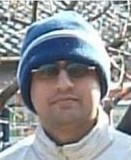 Kisalaya Chakrabarti
Kisalaya ChakrabartiProfessor
Haldia Institute of Technology, India.
Title: Metamaterial photonic crystal array for the confinement of light pulses
Abstract: Light confinement and propagation due to the photonic bandgap (PBG) are introduced in a photonic crystal (PC) array by a line defect (removal of a periodic structure) and position up-chirping (gradually lowering lattice constant). Our new model for light confinement makes use of a line defect position chirped PC array with metamaterial serving as the dielectric material. Using normal material (refractive index +3.927), dielectric material, and metamaterial (refractive index -3.927), we developed and simulated both line defect positions chirped and none position chirped PC arrays for comparison. Because the negative refractive index causes the wave vector direction to be exactly opposite to the positive refractive index, we have employed metamaterial to compensate for light dispersion and leakage impact.
About the Speaker: Prof.(Dr.) Kisalaya Chakrabarti has 22 years of teaching and research experience in the field of Electronics and Communication Engineering. His research domain covers different areas of Optical Communications. He has obtained Doctoral from University of Tsukuba, Japan and two Postdoctoral certificates from Utsunomiya University and National Institute for Material Science also from Japan. He has administrative experiences as Chair Professor in the department of Electronics and Communication Engineering at Bengal Institute of Technology and Management (Santiniketan), where he has also worked as Dean (R&D) for few months. He rendered his duties as Principal at Secom Engineering College situated at Sankrail, Howrah and Pailan College of Management and Technology (PCMT), Kolkata for around two years. The title of his PhD thesis was “An Investigation of Photonic Crystals and Time-Reversed Scattering using Nonstandard FDTD”. Presently he is working as a Professor in the Department of Electronics and Communication Engineering at Haldia Institute of Technology, ICARE Complex, HIT Campus, Haldia, Purba Medinipur, India. He is a reviewer of several journals, such as Optics Express and IEEE Photonics Journal.He is the Senior Member of IEEE and he is the Life Fellow of Optical Society of India since 2005. He was the recipient of prestigious MONBUKAGAKUSHO (MEXT) Scholarship for his Doctoral Program at University of Tsukuba from the Japanese Government.
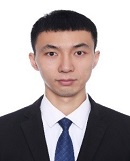 Shou Feng
Shou FengAssociate Professor
Harbin Engineering University, China
Title: Recent Advances in Hyperspectral Remote Sensing Image.
Abstract: Remote sensing technology is an important technical means for human beings to perceive the world, and hyperspectral remote sensing technology has become the mainstream of current research. Hyperspectral image classification (HSIC) is a pixel-level classification task, which is mainly used for fine extraction and recognition of ground object information. HSIC is the basis for subsequent practical application tasks of hyperspectral images and has very important research significance, which is widely used in digital precision agriculture, environmental monitoring, national defense and military strategy and other fields. With the rapid development of artificial intelligence technology, many new hyperspectral image classification methods and algorithms have been proposed. Moreover, rapid advances in these methods have also promoted the application of associated algorithms and techniques to problems in many related fields. This keynote aims to report and cover the latest advances and trends about the Recent Advances in Hyperspectral Image Classification.
About the Speaker: Shou Feng, an associate professor at Harbin Engineering University who holds an impressive list of accomplishments. In addition to being the deputy director of the Key Laboratory of Advanced Ship Communications and Information Technology and the Ministry of Industry and Information Technology, Shou Feng is also a member of several notable organizations such as IEEE, the Chinese Society of Communications, and the Imaging Detection and Perception Committee of the Chinese Society of Image and Graphics. He is also an experienced reviewer for authoritative academic journals such as IEEE TIP, IEEE TGRS, IEEE GRSL, and Remote Sensing.
Over the past three years, Shou Feng has published more than 20 academic papers in prestigious journals such as IEEE TIP, IEEE TGRS, Remote Sensing, and other remote sensing fields, with two papers even being selected as ESI highly cited papers. He has also applied for over 8 authorized national invention patents as the first inventor and authored a monograph titled "Intelligent Classification and Detection of Hyperspectral Images" for the 14th Five-Year Plan of the Ministry of Industry and Information Technology.
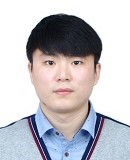 Xukun Yin
Xukun YinAssociate professor
Xidian University, China
Title: Quartz enhanced photoacoustic spectroscopy based humidity sensor for gas-insulated switchgear
Abstract: Gas insulated high-voltage power systems are wildly used in electrical grids in which the major conducting structures are contained within a sealed environment with a dielectric gas known as Sulfur hexafluoride (SF6). However, during the process of electric arc, corona discharge, spark, and superheating, SF6 can be decomposed into F atoms and lower fluorides of sulphur (SF2, SF3 and SF4). Although, most of the sub-fluorides will rapidly react with F atoms to regenerate SF6 molecules again, a part of sulphur fluorides will react with gas impurities to form numerous chemically active gaseous by-products. The decompositions can chemically attach the internal surface of solid insulating materials, and may eventually lead to an unpredictable collapse of the electric power system. Water vapor (H2O) is the most problematic impurity not only decreases insulation, but also creates an acidic atmosphere that promotes corrosion. Therefore, there is a need and interest in developing a sensitive, selective and cost-effective sensor system for H2O detection in a SF6 buffer gas environment. We employed a quartz enhanced photoacoustic spectroscopy (QEPAS) based sensor system for the sub-ppm level H2O detection in SF6 buffer gas. An optimization detection limit of 0.49 ppm was achieved for an averaging time of 1 s, which filled the gap of humidity monitoring in SF6 gas insulated high-voltage power systems and provided a powerful tool for the safety prevention of personnel and equipment system.
About the Speaker: Xukun Yin is an associate professor at Xidian University and has been engaged in the field of ultra-sensitive laser detection for many years. He once studied abroad at Rice University and served as an assistant researcher. Meanwhile, he has designed a variety of high-performance photoacoustic gas sensors to detect atmospheric pollutants or to monitor power system equipment. He has participated in many projects, such as the Youth Fund of National Natural Science Foundation of China, GuangDong Basic and Applied Basic Research Foundation, and the National key research and development Program "Intergovernmental Cooperation in Science and Technology Innovation". Professor Yin has jointly published more than 40 SCI papers with Professor Robert F. Curl, Nobel Prize winner and Professor Frank K. Tittel of Rice University, among which he has published more than 15 SCI papers as the first author on journals such as ACS Sensors. Professor Yin also serves as the editor of the Special Issue of SCI journal Energies and Frontiers in Physics, the Young Editorial board member of the Editorial Board of the journal Optical Technology, and the reviewer of international SCI journals such as Optics Express.
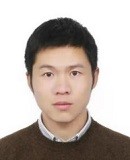 Chen Zhu
Chen Zhu Principal Investigator
Zhejiang Laboratory, China
Title: Coaxial Cable Sensors: From Fiber Optics to Microwave
Abstract: Open-ended coaxial probes have been widely explored and commercialized for dielectric spectroscopy at microwave frequencies over the past decades. Inspired by fiber optic sensing technologies, a new generation of coaxial cable sensors has been successfully demonstrated in recent years. This talk will discuss the recent progress of the newly-developed coaxial cable sensors.
About the Speaker: Dr. Zhu is a Principal Investigator at the Optical Fiber Sensing Research Center of Zhejiang Laboratory. During his study and work at Missouri University of Science and Technology (2017-2021), Dr. Zhu has participated in several projects funded by the National Institutes of Health, the Department of Energy, and the National Science Foundation of the United States and made outstanding contributions. In 2022, he returned to China and joined Zhejiang Laboratory. Dr. Zhu has won many university and international academic awards during his study and work in the United States, including: Selected as one of the world's Top 2% scientists in 2021; IEEE Instrumentation & Measurement Society Graduate Fellowship Award 2018; IEEE St. Louis Section Outstanding Graduate Student Award 2020; The Incubic/Milton Chang Travel Fund from the OSA Foundation 2020; The Missouri University of Science and Technology College of Engineering and Computing Dean’s Ph.D. Scholar Award 2019 and Graduate Leadership Award 2021.



